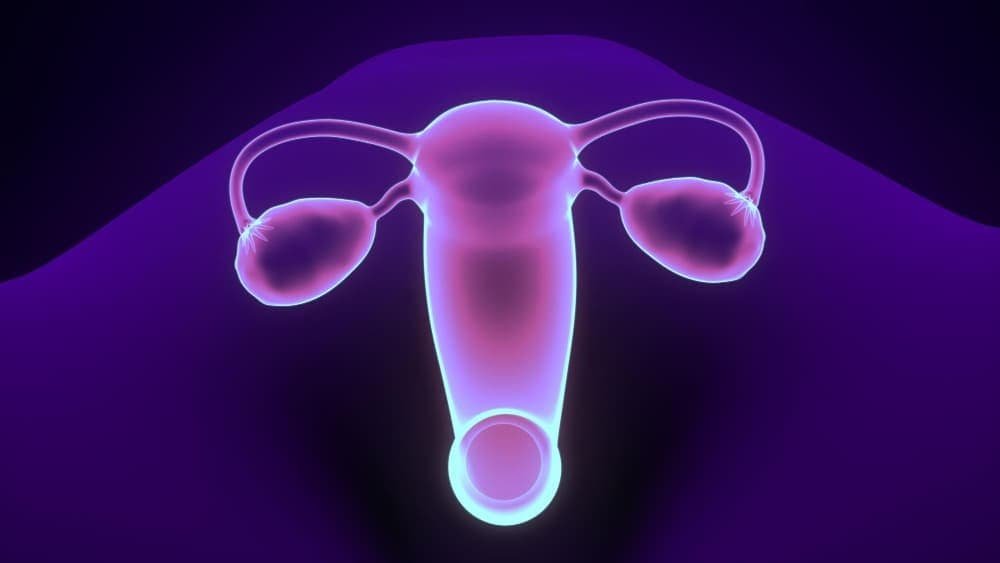Dealing with the painful symptoms of adenomyosis can leave you asking one big question: is adenomyosis genetic? Let’s explore the science behind this complex uterine disorder and what the latest research says about a possible hereditary link.

What Exactly Is Adenomyosis?
Adenomyosis is a gynecologic medical condition that occurs when the endometrial tissue—the very lining that you shed during menstruation—grows into the muscular wall of the uterus (the myometrium). Unlike endometriosis, where this tissue grows outside the uterus, adenomyosis is confined to the uterine wall.
When this happens, the displaced endometrial cells, including stroma and glands, continue to act as they normally would. They thicken, break down, and bleed during each menstrual cycle. But because they are trapped within the muscle, this process can cause the uterus to enlarge and lead to significant pain and heavy bleeding. It’s a challenging disorder that primarily affects women of reproductive age, typically between the age of 35 and 50.
So, Is Adenomyosis Genetic? 🤔
The question of whether there’s a hereditary component to adenomyosis is a major focus in the medical community. While the exact cause remains unknown, a growing body of evidence suggests a possible genetic predisposition. If your mother or sister had adenomyosis, you might have a higher chance of developing the condition, pointing to a potential familial nature of the disease.
Researchers are actively investigating this link. The pathogenesis—or the way the disease develops—is considered multifactorial. This means it’s likely not caused by a single factor but a combination of genetic, hormonal, and environmental factors. This complexity is why explaining the persistence and proliferation of this ectopic tissue is so challenging.
What Do the Studies and Research Say? 🧬

To better understand the genetic connection, it’s helpful to look at what the results of the studies show. Several research projects have delved into the genetics of this disorder.
- Gene Expression and Analysis: A gene expression study often involves comparing the tissue of women with adenomyosis to those without it. This analysis has revealed that there are differences in how certain genes function. Researchers have observed variations in genes responsible for cell migration, differentiation, and proliferation, which could explain why endometrial cells move and grow abnormally.
- Somatic Mutations: Recent researchers have identified somatic mutations in the uterine tissue of women with adenomyosis. These are genetic changes that aren’t inherited but occur during a person’s life. This study provides a strong clue about the mechanisms that might trigger the condition.
- Association with Endometriosis: There is a well-known association between adenomyosis and endometriosis. Since endometriosis is known to have a hereditary link, this connection further supports the idea of a genetic predisposition for adenomyosis as well.
- Epigenetic Factors: Beyond direct gene variation, scientists are also looking at epigenetic factors. These are modifications that change how your genes work without changing the DNA sequence itself. An oestrogen/progesterone receptor imbalance, for instance, could be influenced by epigenetic changes, contributing to the development of adenomyosis.
In this article, we can see that while we can’t definitively say “yes” to “is adenomyosis genetic,” the evidence for a genetic link is compelling.
Common Symptoms of Adenomyosis
The symptoms of adenomyosis can range from mild to severe, significantly impacting quality of life. If you’re concerned, watch for these common signs:
- Heavy Menstrual Bleeding: Abnormally long or heavy periods (menorrhagia) are a hallmark symptom.
- Severe Cramping: Painful menstruation (dysmenorrhea) that feels like sharp, knife-like cramping throughout your period.
- Chronic Pelvic Pain: A general, persistent pelvic ache or pressure.
- Painful Sex: Discomfort or pain during intercourse (dyspareunia).
- Infertility: In some cases, the condition can interfere with reproductive function.
- An enlarged or tender uterus.
It’s important to read the signs your body is giving you. If these symptoms sound familiar, it’s time to seek medical advice.
FAQS
Does adenomyosis run in families?
Yes, studies suggest a possible hereditary link. You may have a higher risk if your mother or sister has the condition.
Who is most likely to get adenomyosis?
Women in their late reproductive years, typically between the ages of 35 and 50, are most likely to be diagnosed. Having had children also increases the risk.
Is adenomyosis a genetic disorder?
It is not classified as a purely genetic disorder, but research shows a strong genetic predisposition. Its development is considered multifactorial, involving a combination of genetic, hormonal, and environmental factors.
What age does adenomyosis start?
The condition is most commonly diagnosed in a woman’s 30s and 40s, though symptoms can begin earlier. It typically resolves after menopause.
Finding Hope with Modern, Non-Surgical Treatment ❤️🩹
Living with the debilitating pain and heavy bleeding of adenomyosis can be exhausting. While the background of the disease is complex, including its potential genetic roots, the focus should be on finding an effective treatment that works for you. Many women fear that hysterectomy (surgical removal of the uterus) is their only option, but that is no longer the case.
Dr. Samir Abdel Ghaffar specializes in a modern, minimally invasive procedure called Uterine Artery Embolization (UAE). This interventional radiology technique offers a powerful alternative to surgery. By blocking the blood supply that feeds the adenomyosis tissue, UAE causes the abnormal tissue to shrink and die. This leads to a dramatic reduction in symptoms—less bleeding, less pain, and a better quality of life—all while preserving your uterus.
If you want to learn more about a path to relief without major surgery, exploring UAE with an experienced consultant is a great next step.

 العربية
العربية 
